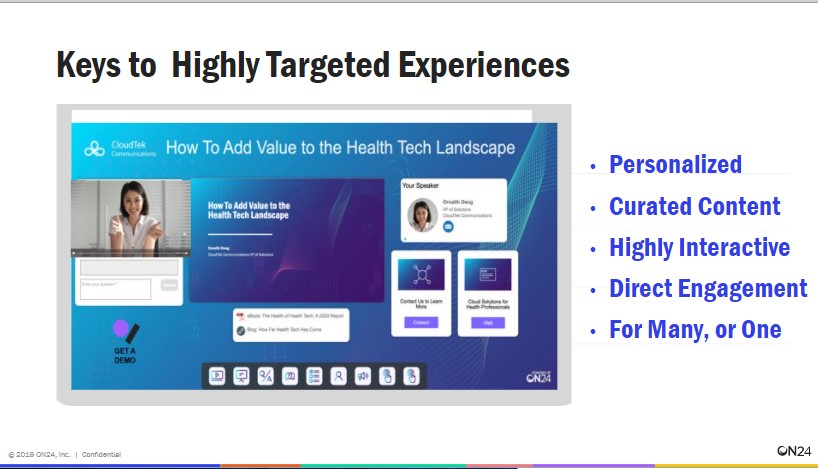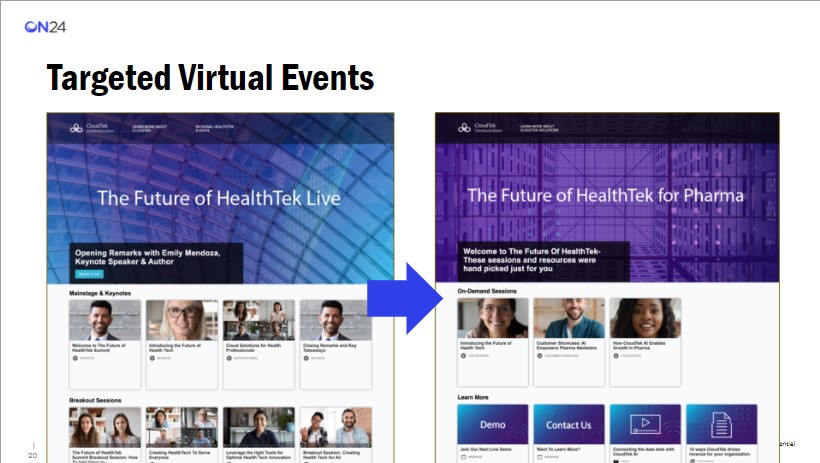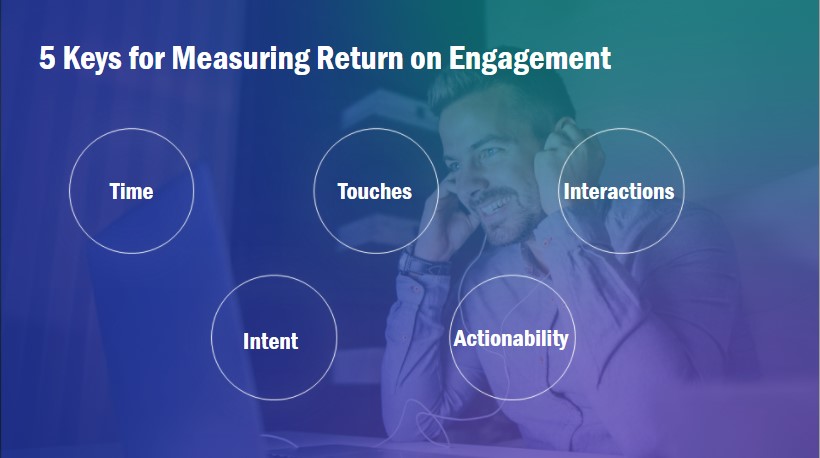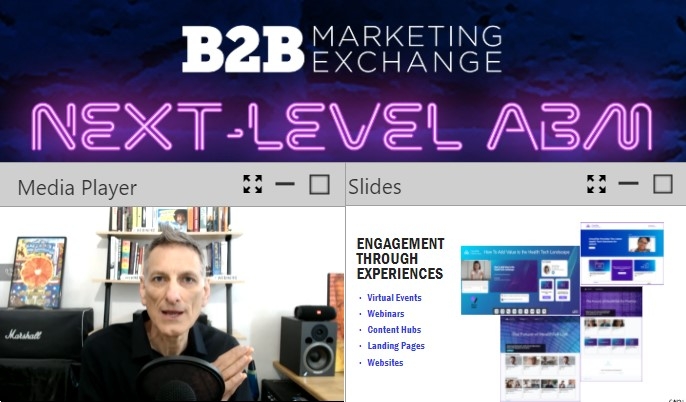Demand Gen Report’s coverage of its B2B Marketing Exchange: Next Level ABM is the gift that keeps giving. We’re back again with additional insights and actionable advice to further refine your ABM campaigns. While the event took place from June 7-10, the takeaways just keep on coming — and we couldn’t just forget to cover the last day, could we?
Featuring a series of certification sessions from Drift, ON24 and Demandbase, the final day was less extensive than the previous three but just as informative and thought-provoking. To close out the event, Mark Bornstein, ON24’s VP of Marketing, took the digital stage to deliver his closing keynote, “Engagement: The Missing Link To A Successful ABM Strategy.”
According to Bornstein, that “missing link” is how marketing teams engage with prospects. While in the past, teams would provide targets with an E-book or insert their logo into pre-made content as necessary, it’s no longer enough for modern buyers. Instead, engagement should be promoted through a full experience — specifically digital experiences.
Driving Engagement Through Experiences

As buyers increasingly demand personalized buying experiences that are emblematic of their B2C experiences, it appears that organizations are struggling to meet that desire. In fact, 87% of organizations struggle with their digital experience management and delivery strategies. However, those who successfully leverage digital experiences are building more personal relationships with their audience. Additionally, digital experiences are driving a majority of an organization’s pipeline, Bornstein explained, as he highlighted the under-utilization of these channels.
“All of these channels are incredibly powerful tools to drive our ABM programs, but they’re just being used as basic demand generation tools to gather names,” he continued. “We need to re-think and re-imagine how we utilize our daily digital tech, from our websites and virtual events to webinars, content hubs and landing pages.”
The repurposing of those platforms should feature hyper-personalized interactive curated content that’s deliverable to many but still useful for a few. Bornstein recommended that marketing teams optimize all experiences around engagement, such as responses, clicks to additional assets and downloads. These experiences should feature as many touchpoints as possible, providing additional content and opportunities to connect with sales reps, while encouraging further action (such as signing up for a demo).
Virtual and hybrid event experiences also fall short of their full potential. While these events typically target thousands of people, they are usually compromised of multiple content forms that are easy to break down into digestible pieces that can be re-packaged for smaller, more targeted audiences. These changes don’t have to be big, either; it could be as simple as linking to a custom landing page.
“A lot of us are already doing the dynamic web pages based on an IP address that delivers [the prospect] to a page with their logo, but we can take it a step further and start creating custom inbound and outbound experiences for target accounts or groups,” said Bornstein. “I’m seeing a lot of customized content hubs and portals that are integrated into landing pages and web pages where targets are a delivered a content experience beyond their logo.”
Personalizing Event Attendance & Promotion

Speaking of events, event promotion tactics are in themselves becoming experiential. This strategy is more successful for smaller scale events but targeting a small pool of prospects enables promotional opportunities that go beyond emails. As an example, Bornstein mentioned incorporating custom landing pages with the account’s branding, banners, a video speaking directly to the account reps and integrated chatbots.
“Event promotion personalization is more than just some words — you’re actually delivering a mini experience,” said Bornstein. “It’s this idea of making everywhere somebody navigates completely customized for them. If we’re inviting a target to an event, a custom landing pages delivers an experiential promotion where they won’t just sign up for the event, but will click on a couple things to provide us with aggregate engagement data.”
In addition to customized landing pages, the exit paths should be just as customized. After registering, targets should be taken to a confirmation page that presents them with other links to click in the meantime, videos to watch or even consume more content that’s relevant to them. Companies can monitor these touchpoints and aggregate the data from the actions to personalize future experiences for the target audience.
“It’s really the difference maker, as the target is coming to an event with hyper-relevant, tailored content,” said Bornstein. “Instead of a generalized contract, the target can get something very specific to them, their company, industry and unique needs. Everything is highly qualified and targeted.”
Analyzing & Capitalizing On Event Data

While the industry is getting better with the core principles of ABM, specifically targeting, the artificial intelligence (AI) powering that targeting still lacks guidance. Sure, AI can identify pain points, generate leads and supply relevant content to prospects, but it struggles to close the interest gap and open the intent one.
“While we’re really good at targeting and figuring out which accounts have the highest propensity to buy, AI still lacks human insight,” Bornstein explained. “While we can measure interest and figure out where the best opportunities lie, we’re struggling to figure out intent. There’s a huge difference between understanding who to target and figuring out who will actually buy.”
When organizations craft digital experiences, they can use the aggregated data from multiple touchpoints to identify who’s in a buyer group and measure how long they interacted with a certain type of content. This interconnected web of personalization and touchpoints feeds into what Bornstein referred to as the “new buyer’s journey,” where everything from webinars to content experiences are engagement-driven and personalized. He continued that ABM should focus on creating target account journeys, which includes experiential marketing from the top-of-funnel to the bottom.
“When you make experiential marketing the tip of the spear for your ABM programs, you are going to be able to make that jump from interest and propensity to intent because you’re going to get the insights and data that you need,” said Bornstein. “Engagement is magic, and when you’re measuring your ROI, or what we call return on engagement, everything changes. Instead of measuring who clicked, we’re looking at how long somebody was in an experience, how many pieces of content they touched, the number of interactions and if they asked any questions.”
If you’re looking for more ABM insights and takeaways, be sure to check out our Monday, Tuesday and Wednesday recaps.







